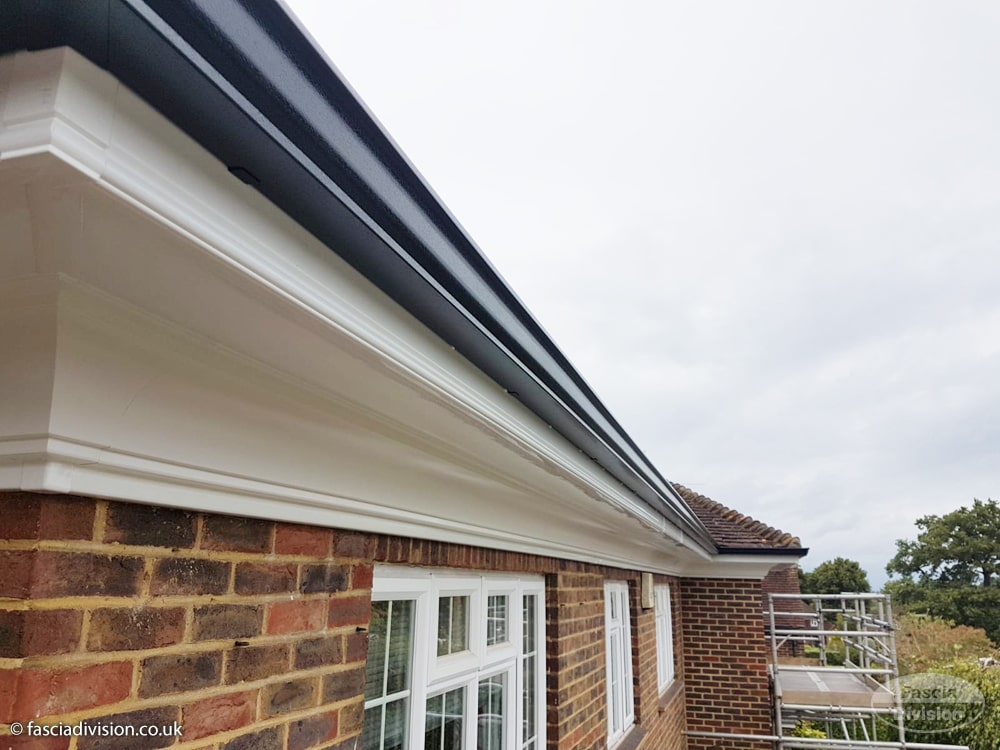
Fascia And Soffit Maintenance
Add a review FollowOverview
-
Founded Date Juni 13, 1957
-
Posted Jobs 0
-
Viewed 94
Company Description
The 9 Things Your Parents Taught You About Eaves Repair
Comprehensive Guide to Eaves Repair
Eaves play a vital role in protecting homes from weather aspects, directing water overflow, and boosting aesthetic appeal. Due to their popular position, they are often exposed to the aspects, causing conditions that demand repairs. This article describes the importance of eaves, common problems that emerge concerning them, techniques for conducting repairs, and pointers for maintenance.
Value of Eaves
Eaves are the edges of the roof that cross the walls of a structure. Their main functions include:

- Water Management: They direct rainwater far from the structure and prevent flooding.
- Security from Weather Elements: Help prevent water infiltration, snow, and ice build-up.
- Energy Efficiency: Properly designed eaves can decrease cooling and heating costs by managing sunlight going into through windows.
- Aesthetic Appeal: They enhance the architectural style of a structure, adding character and design.
Common Issues with Eaves
Eaves can deal with several issues due to their direct exposure to the aspects. Here are some of the most regular problems:
| Problem | Description |
|---|---|
| Damage from Water | Disintegration, rot, or mold triggered by inadequate drain. |
| Insect Infestations | Birds, bugs, and rodents may discover shelter in eaves. |
| Structural Damage | Deformed or cracked eaves can compromise roof integrity. |
| Missing/incomplete | Missing shingles or panels can expose the interior. |
| Fractures and Gaps | Permit water penetration and bug entry. |
Eaves Repair Methods
Repairing harmed eaves needs varying methods depending on the problem’s seriousness. Here’s a structured method to eaves repair:
1. Evaluate the Damage
Before continuing with any repairs, conducting a thorough inspection is vital. Try to find:
- Visible damage to the eaves.
- Indications of water damage on walls and foundations.
- Bug infestations or nesting.
2. Gather Necessary Materials
Depending upon the repair requires, the following products might be needed:
- Ladder
- Safety equipment (gloves, goggles, mask)
- Replacement materials (shingles, wood, etc)
- Caulk or sealant
- Paint (for visual appeals)
3. Conduct the Repairs
The following are actions for common repairs:
-
Replacing Damaged Sections:
- Cut away damaged parts of the eaves.
- Procedure and cut replacement pieces to fit.
- Attach the new sections utilizing nails or screws.
-
Sealing Cracks and Gaps:
- Use caulk or sealant to fill gaps.
- Guarantee the location is tidy and dry before using the sealant for efficient adhesion.
-
Strengthening the Structure:
- If structural components are harmed, think about including support brackets or replacing bigger areas of wood.
4. Finish with Painting
After repairs, re-paint the eaves to protect the materials from further degeneration and match them with the home’s outside.
Preventive Maintenance Tips
To lengthen the life expectancy of eaves and prevent extensive repairs, regular maintenance is needed. Here are some proactive steps house owners can take:
- Regular Inspections: Conduct evaluations a minimum of twice a year to identify any emerging concerns early.
- Tidy Gutters: Ensure seamless gutters are free of debris to help with appropriate water flow.
- Trim Overhanging Branches: Prevent leaves and branches from accumulating and triggering water backups or damage.
- Insect Control: Regularly look for and get rid of insect invasions.
- Repaint Every Few Years: Protect wooden eaves by repainting or staining as needed.
When to Call a Professional
While lots of property owners can manage small repairs, some scenarios call for professional assistance. Think about hiring a professional if:
- The repair includes extensive structural damage.
- There are safety issues, especially when dealing with heights.
- Insufficient experience in repairs results in unpredictability about appropriate techniques.
Often Asked Questions (FAQs)
Q1: How typically should I check my eaves?
A: It is suggested to check eaves a minimum of twice a year, ideally in spring and fall, to identify possible issues.
Q2: What are the indications that my eaves require repair?
A: Signs consist of noticeable damage like fractures, drooping, peeling paint, water spots, and pest problems.
Q3: Can I repair my eaves myself?
A: Many small repairs can be done by homeowners, but it’s essential to examine skill levels. For substantial repairs, employing a professional is advisable.
Q4: How do I avoid eaves from ending up being damaged?
A: Regular maintenance, consisting of cleansing rain gutters, examining for damage, and protecting versus bugs, can help prevent eaves from weakening.
Q5: Are eaves repairs covered by property owners insurance?
A: Coverage can differ by policy. It’s vital to seek advice from your insurance coverage company concerning specific scenarios and protection types.
Eaves play an important role in a home’s structural integrity and aesthetic appeal. Repairing and keeping them is essential for maintaining their performance and extending their life expectancy. With regular inspections and proactive care, house owners can prevent minor problems from escalating into more extreme issues. Whether going with DIY repairs or employing a professional, understanding eaves and their maintenance requires makes sure a safe, efficient, and beautiful living environment.